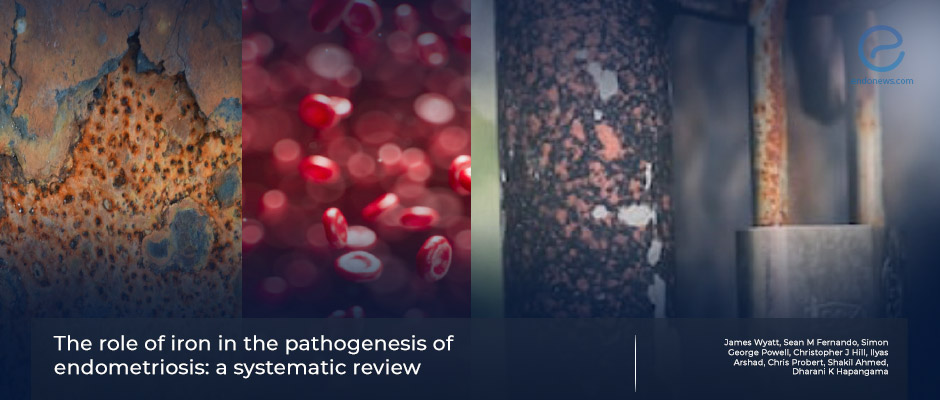Elevated iron levels in "endometriosis pathogenesis"
Sep 20, 2023
Abnormally high iron and ferritin levels were observed in endometriotic lesions.
Key Points
Highlights:
- Excess iron is present in endometriotic tissues, and iron-mediated oxidative stress not only causes an inflammatory micro-environment with cell damage; but also is linked to subfertility and symptom severity in endometriosis.
Importance:
- Local iron excess in endometriotic fluids and tissues could provoke an inflammatory environment.
- Iron-mediated oxidative stress can explain the role of iron in the pathogenesis of endometriosis.
What's done here:
- This is a systematic review thematically analyzing the human and animal studies published in English, retrieved from library databases.
- The review was reported in accordance with the PRISMA guidelines.
Key Results:
- A total of 53 (47 human and 6 animal) studies that met the eligible criteria were selected from 776 collected records.
- Systemic iron levels were reported in 6 studies, while serum iron levels were compared in women with or without endometriosis in five studies.
- Despite using different methodologies, studies found evidence of free iron and ferritin overload in various tissues and fluids of endometriotic women compared to healthy controls.
- Iron excess is also demonstrated in ovarian endometriomas, ovarian follicles, and ectopic endometriotic lesions.
- There are opposing results in the studies about the correlation between high iron levels and the severity of the disease.
Lay Summary
The presence of abnormal levels of iron and ferritin in endometriotic lesions is likely due to repeated bleeding episodes. When red blood cells break down, the iron content is released, which can cause inflammation leading to damage to surrounding tissues. Iron-mediated oxidative stress is linked to subfertility, symptom severity, and possibly malignant transformation in patients with endometriosis.
The evidence base in the literature about excess iron in endometriotic lesions and its possible effect on pathogenesis is large. However, there is no comprehensive review to summarize the understanding of the collected data and to suggest future directions in this field.
Wyatt and colleagues from the Department of Women's and Children's Health, University of Liverpool, UK, collected the published data to summarize the role of iron in multiple pathogenic mechanisms. Their article was recently published in the journal Human Reproduction Open.
The authors examined 63 human and animal studies on this topic and discussed the elevated iron and its products in peritoneal fluid, ovarian follicles, and endometriomas. Iron regulation and dysregulation related to inflammatory processes and oxidative-antioxidative balance in endometriosis have been debated. Another topic explained was ferroptosis in endometriosis-associated subfertility.
The authors created a diagram to explain all the main topics discussed and the role of iron in the pathogenesis of endometriosis. They underlined the pro-inflammatory effects of oxidative stress are the potential genetic mutations noted in malignancies. They believed further research on the role of iron chelation, ferroptosis, the relation between local hypoxia and iron excess, and the role of iron for malignant transformation would help to understand the pathogenesis.
Research Source: https://pubmed.ncbi.nlm.nih.gov/37638130/
iron ferritin ferroptosis iron chelation iron excess oxidative stress cell damage peritoneal fluid ovarian follicle endometrioama endometriosis.

